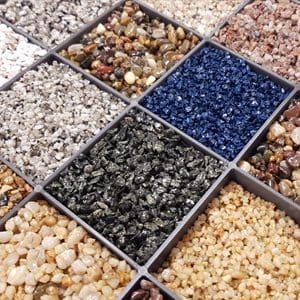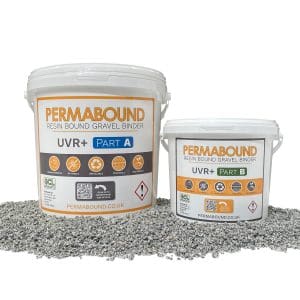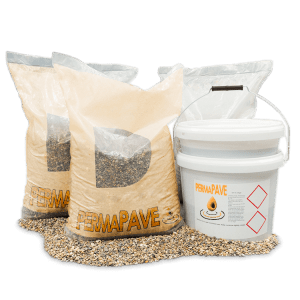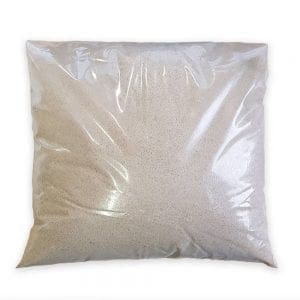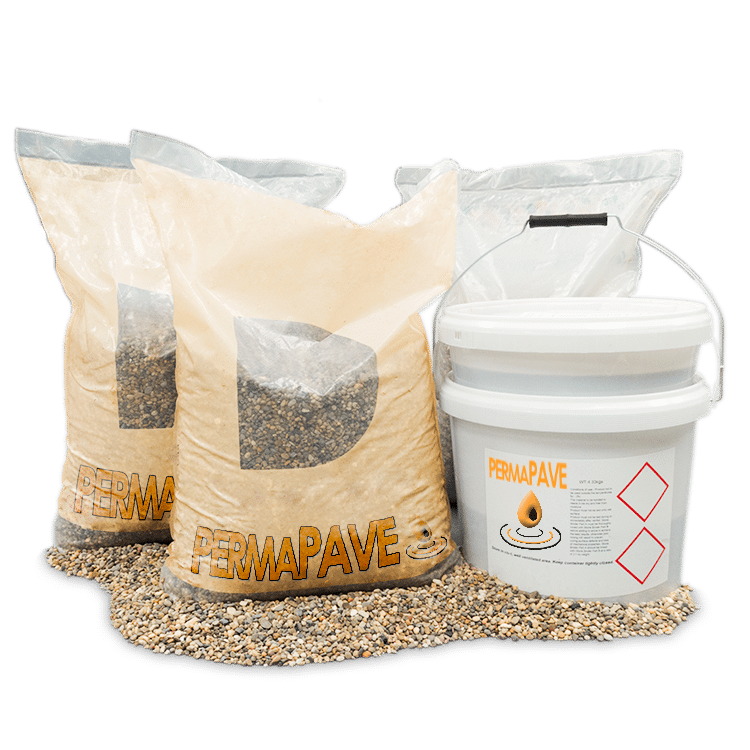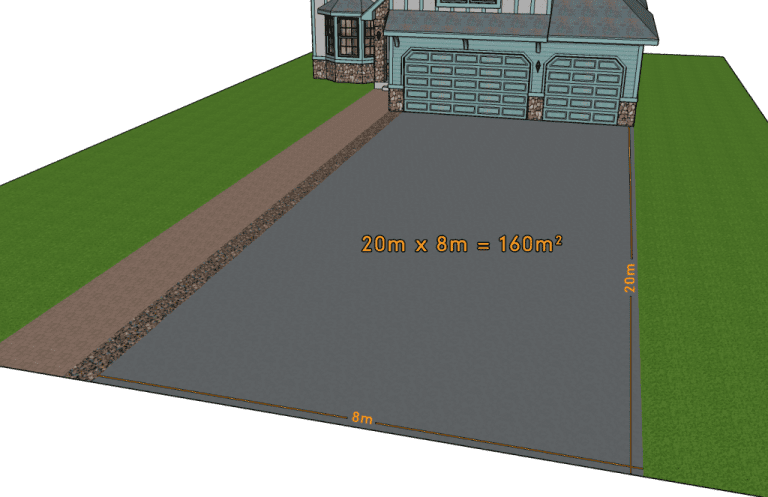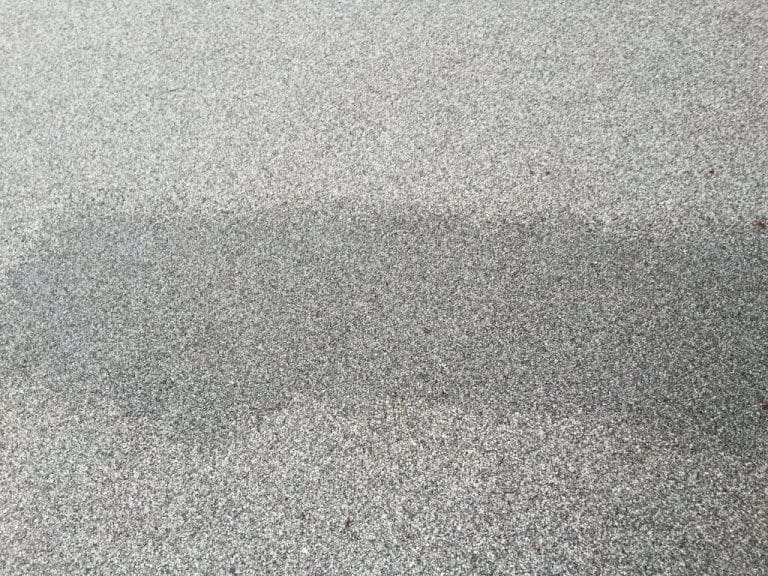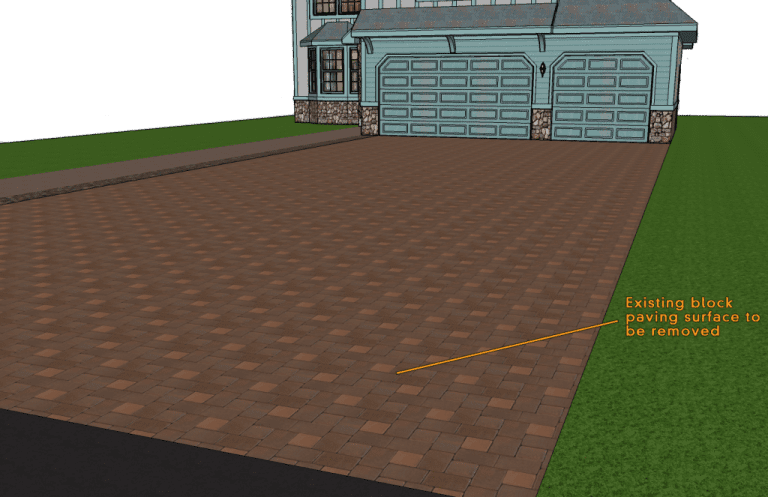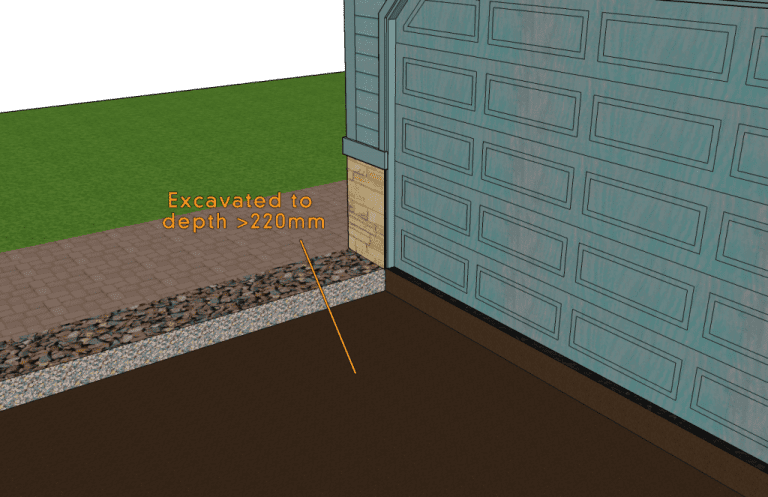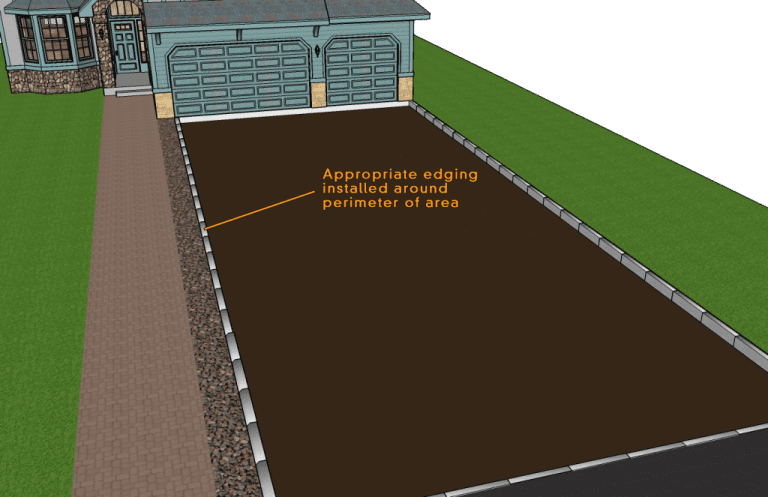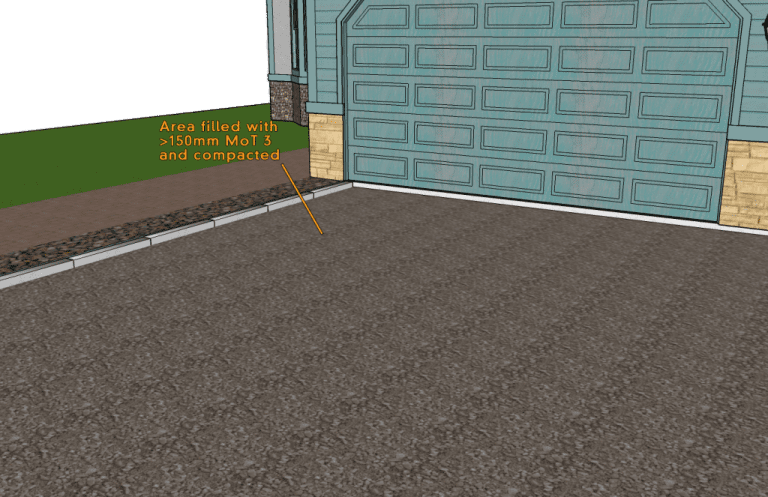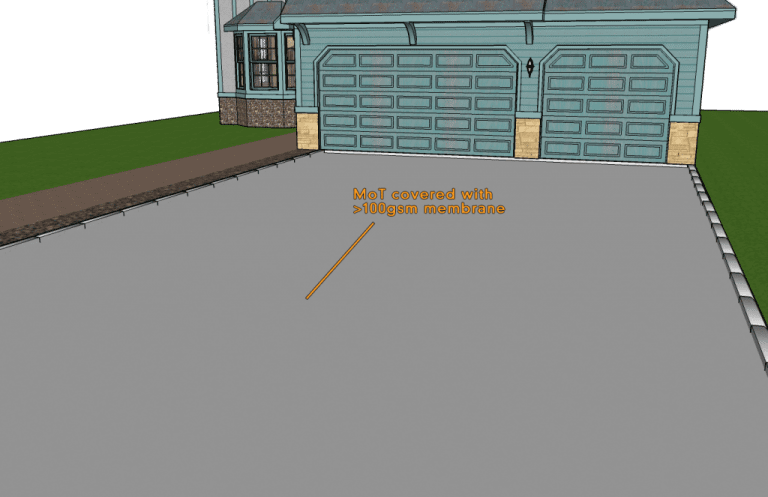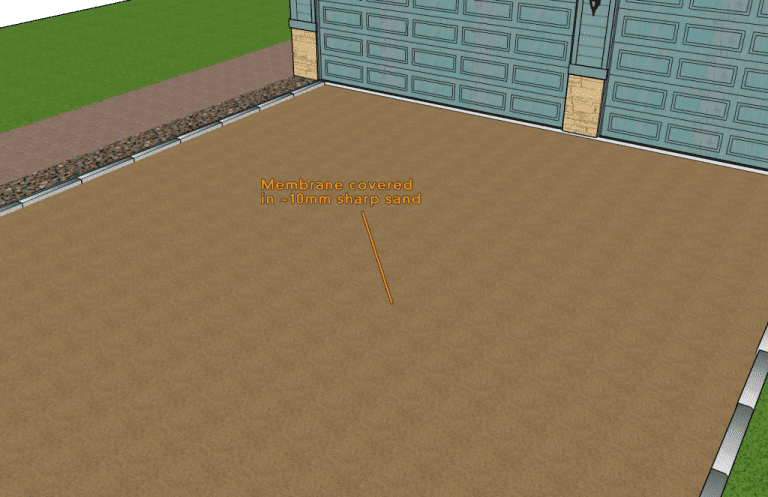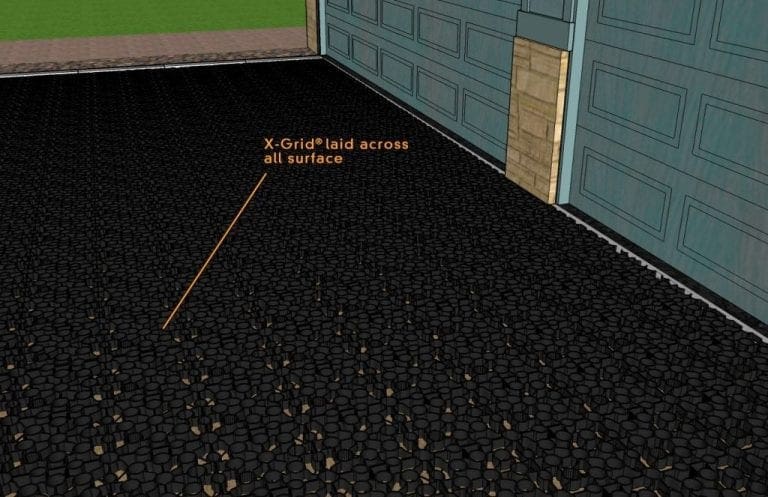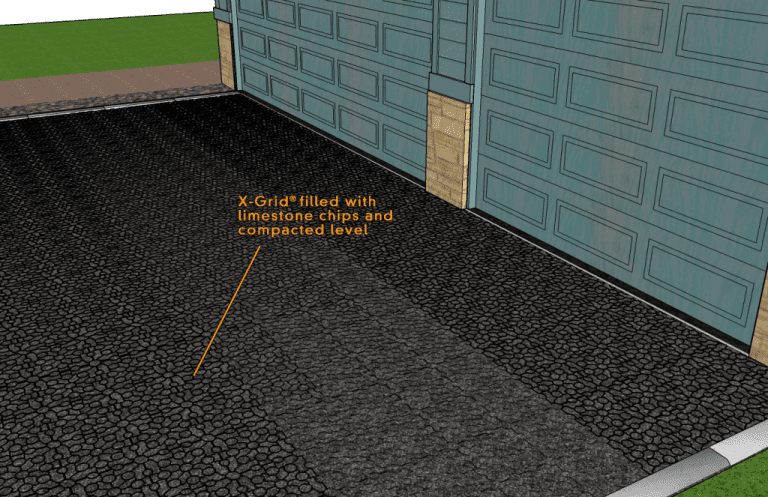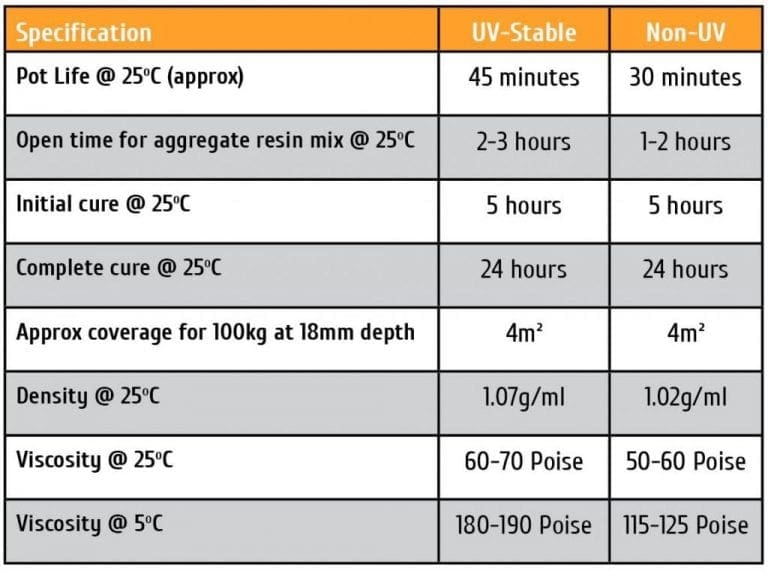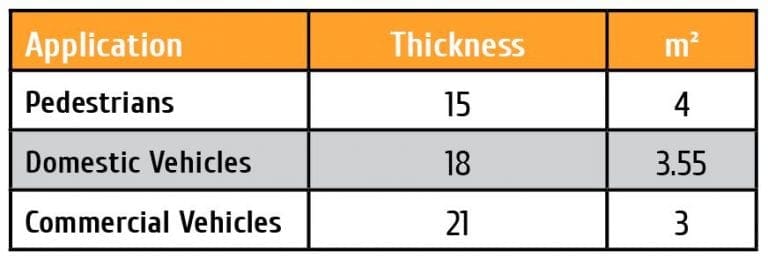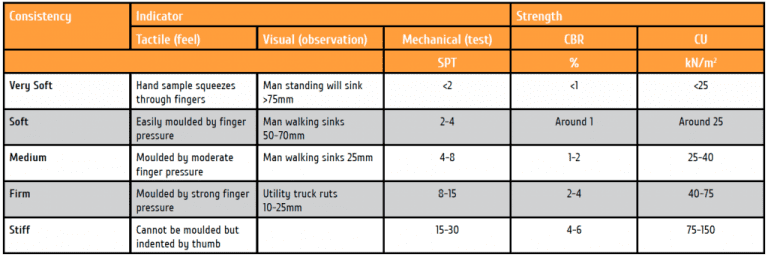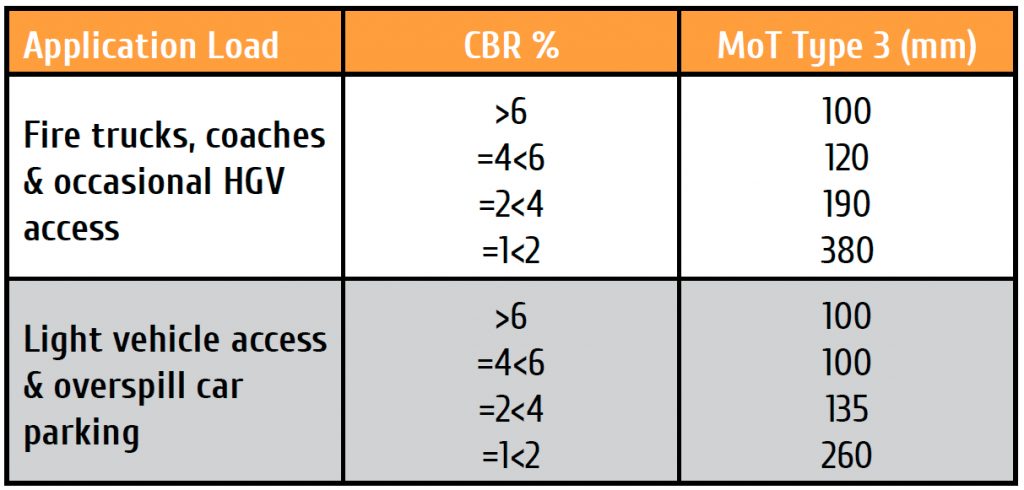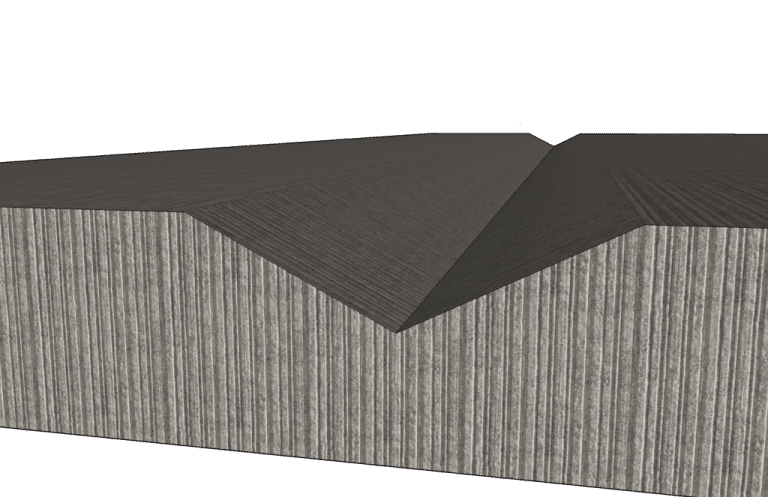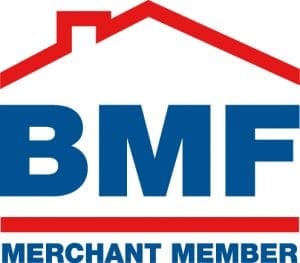In order to work out the required depth of MoT type 3 to install as a sub-base, you must first calculate the CBR value of the existing soil present at the proposed site. Use the below table to indicate the stiffness of the ground before using the table to determine the sub-base thickness required.
The MoT type 3 hardcore sub-base depth will vary from project to project dependent on the volume and weight of the traffic using the surface as well as the ground stiffness.
See the table below to work out the required sub-base depth, for determining the CBR value of the existing sub-grade soil please refer to the table “Sub-grade Strength/Ground Condition”.
X-Grid Fill
If using X-Grid® as a sub-base layer in place of a tarmac or concrete base, the grid should be filled with a suitable and appropriate medium to provide maximum stability and durability of the installation.
We recommend filling the X-Grid® with angular gravel with a stone diameter of up to 20mm. Limestone chippings are a cost effective and suitable choice for the fill, however it can be substituted for another material which meets this criteria.
Once the grid has been filled, we highly recommend the use of a vibrating plate compactor (whacker) to consolidate the gravel and help the X-Grid® to bed into the sand layer below.
If you are in any doubt regarding your choice of grid-fill material, please seek advice from our helpful and knowledgeable team.
Preparing Existing Base
If installing onto an existing concrete or tarmac base then there is a little work to be done to ensure that the base is sound and suitable for use.
Firstly, the surface should be carefully inspected for cracks, crumbling, algae, weeds and other debris. If cracks are present then these should be cut into a ‘V’ shape to prevent the crack from reflecting upwards into the resin surface.
Porous or open grade concrete surfaces should be coated with a primer product in accordance with the manufacturer’s instructions to enable a cohesive bond with the resin and to prevent degradation.







